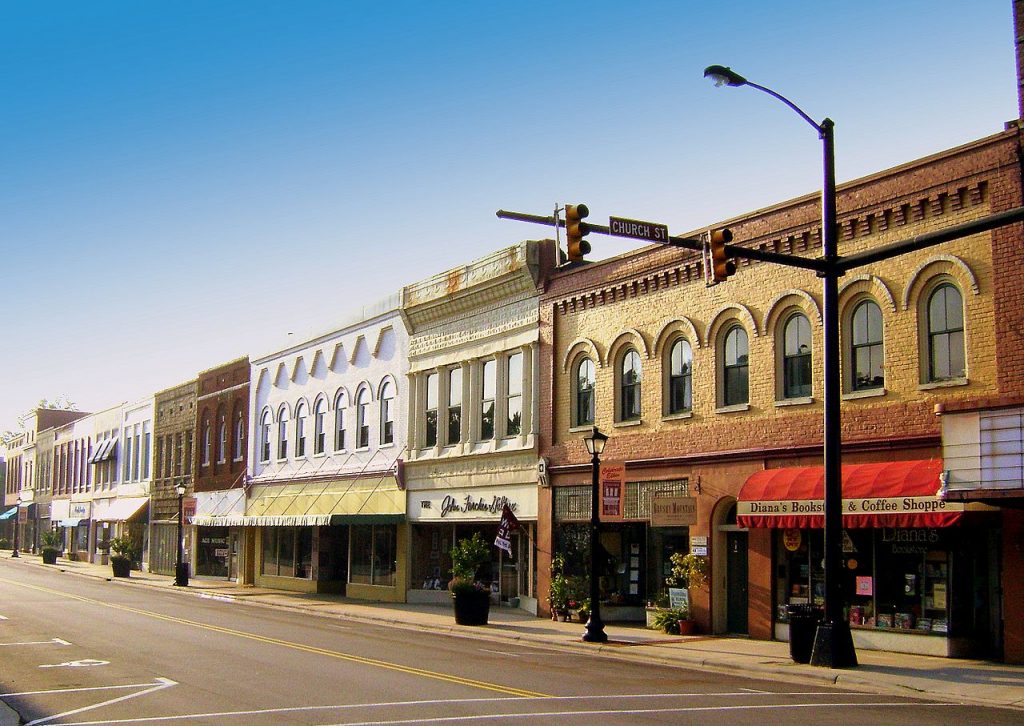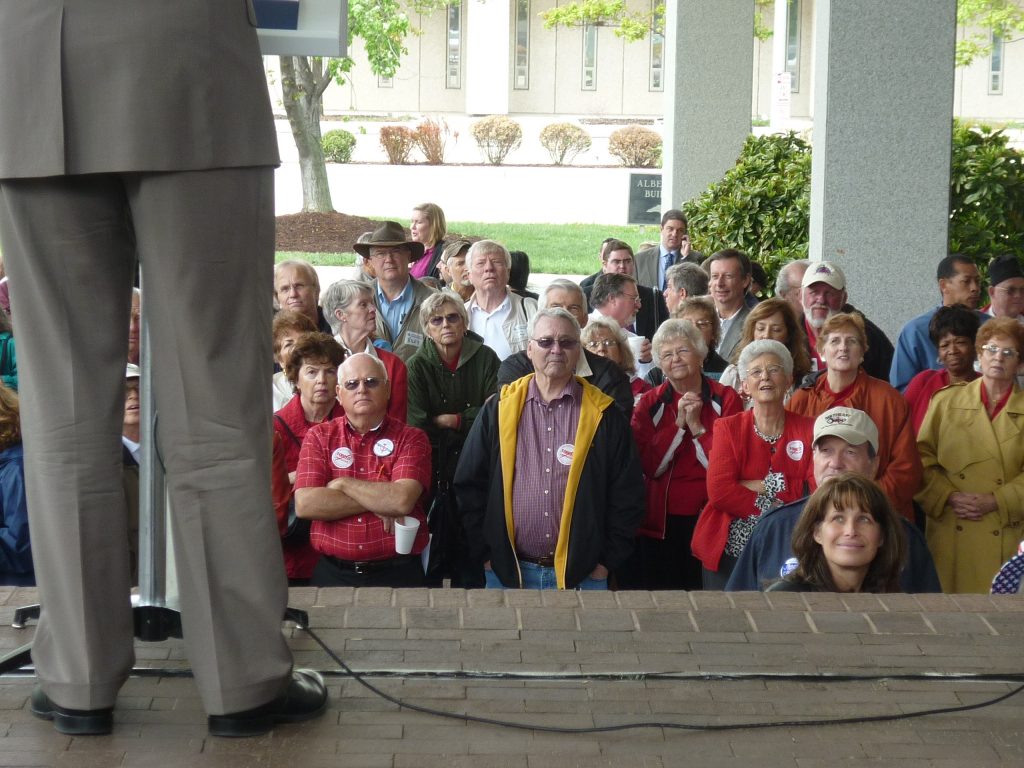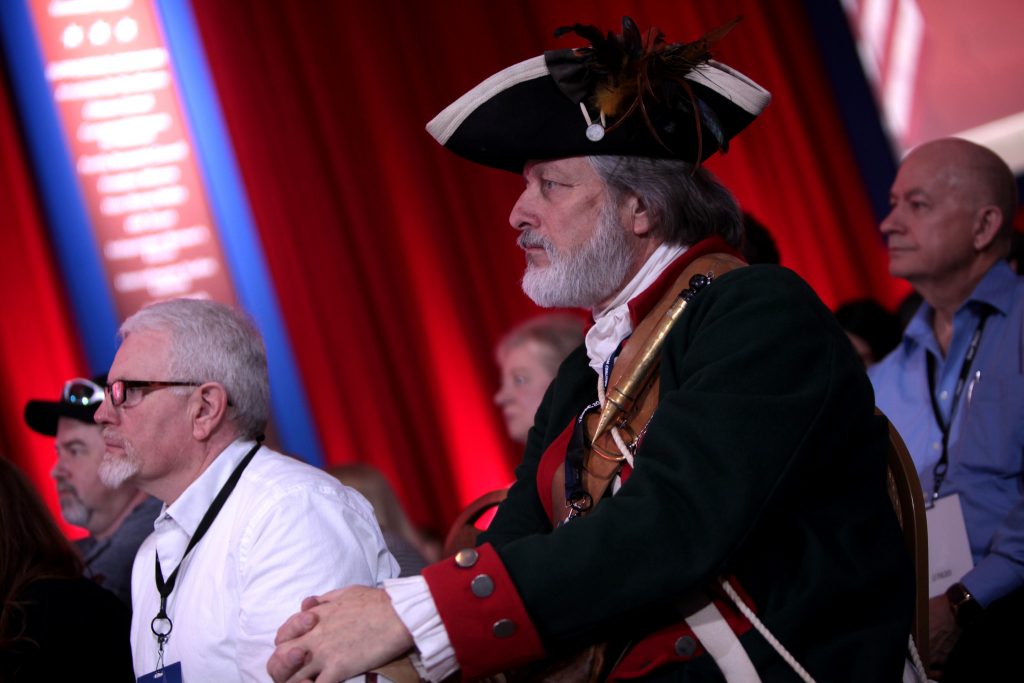How the Tea Party Transformed American Politics

In the first few months of President Barack Obama’s administration in 2009, a new conservative, populist social movement burst onto the American political scene. Throughout the 2008 presidential campaign, conservative media had consistently stoked fears about Obama. After he took office, as a clearer picture emerged regarding the new president’s policies on government spending and debt, a large group of conservative Americans nationwide—encouraged by conservative media—coalesced into a vibrant, unique, and effective movement called the Tea Party.
Among pundits and scholars, there was disagreement regarding what the politically fundamentalist Tea Party actually was. Was it the result of machinations by billionaire industrialists Charles and David Koch? Was it constructed from the compelling rhetoric of Fox News and syndicated talk show hosts like Glenn Beck and Rush Limbaugh? Or was it a spontaneous eruption by everyday people? Simply put, the Tea Party was—and is—all three.
Since the beginning, the Tea Party movement has been a network in which those three components—elite organizations, conservative media, and local groups of everyday citizens—are connected through social and mass media as well as interpersonal ties. This structure became apparent to me when I spent 18 months in 2010 and 2011 conducting ethnographic research with local groups of Tea Party activists in central North Carolina.
One of my fieldwork sites was a small picturesque town in the foothills of the Appalachian Mountains. Dixon*, North Carolina, is popular with tourists for its downtown that seems frozen in the 1950s. Formerly anchored by textile manufacturing and tobacco cultivation, the local economy had already been faltering for some time when the decline was accelerated by the passage of free-trade agreements in the 1990s and the end of tobacco price supports and quotas in 2004. After these economic assaults, many people were forced to seek employment elsewhere and now typically commute to larger cities in the Carolina Piedmont such as Winston-Salem, which is some 30 miles away.
In the summer of 2011, I attended a meeting of Dixon’s city council. The cities and counties of the western Piedmont were forming a regional transportation authority, or consortium, to address their changing transportation needs, and the group wanted to recruit Dixon as a member. The question of the city’s participation was to be the main topic at the city council meeting.
Dixon also contained a small but active local Tea Party group—the Adams County Tea Party—which regarded regional transportation planning as an ominous and sinister plot to undermine their freedom. [1] [1] To protect the privacy of my informants, I’ve used the fictitious names Dixon and Adams County Tea Party throughout this piece. They—in accord with many Tea Partyists around the nation—viewed local land-use management, regional planning, and sustainable development as efforts guided by a set of United Nations regulations called Agenda 21.
Agenda 21, an action plan that emerged from the 1992 U.N. Conference on Environment and Development (or Earth Summit), offers voluntary sustainable-development guidelines for governments at the local and national levels. By 2011, Tea Party members around the nation were familiar with Agenda 21 because Tea Partyists had been circulating warnings about it through social media since 2009. They saw Agenda 21 as a plot by which transnational organizations were attempting to undermine the autonomy of local, regional, and national governments. According to Tea Partyists, such schemes would change their communities by mandating dense housing, limiting automobile use, and imposing social equity, as defined by Agenda 21. Social equity was seen as being dangerously similar to social justice, which—thanks to Tea Party prophet Glenn Beck—came to imply tyrannical social engineering.
Because Dixon’s city council had invited a representative of the nascent regional transportation authority to brief the public on the plan that summer evening in 2011, Adams County Tea Party members saw Agenda 21 and its strategy for social equity coming to their picturesque little town. During the question-and-answer period after the presentation, the mild-mannered representative was peppered with questions about consolidated housing, the loss of local autonomy, and social engineering, resulting in exchanges like this:
Council member and Tea Party ally: Can you explain the social equity component?
Consortium representative: Right now we have 1,600,000 people in the region. We will grow to about 2 million, so says the state demographer. We have a diverse population already. We have new immigrants and people who’ve been here for a long time. We have disparities within the region. … [O]ne of our strengths—diversity … people working together on common problems will be a better place to be.
Council member: So it really is social engineering.
Representative: I wouldn’t call it that.
Tea party member: But that is what you just said.
Representative: I wouldn’t call it that.
The representative told me later that many of the questions that Tea Party attendees threw at him were unfamiliar to him and seemed to misconstrue the plan. Crucially, he was unfamiliar with the specific meanings Tea Partyists attached to issues of regional planning and sustainable development. It was as if he and the Tea Partyists were discussing two entirely different plans, and he was left to offer responses like, “That is not planned by the consortium,” and “I’m not aware of that restriction,” which the Tea Partyists interpreted as evasive or untrue.
As a result, the city council was even more divided than before the meeting, and Adams County Tea Party members were able to call their efforts a “victory” on social media, thereby encouraging other Tea Party groups to engage in similar actions. Nearly six years later, Dixon is not a member of the consortium, and local governments across the nation have experienced protests against plans that were supposedly inspired by Agenda 21.
This scene illustrates a crucial, but not often discussed, factor in the Tea Party movement’s success. Local activists were overlooked in many of the early accounts of the Tea Party, yet the groups I observed made local politics a primary site of conflict. It is important to stress that these local groups—then and still today—do not just form ad hoc for one event. Local Tea Party groups of 50 to 500 people regularly meet to learn about issues, exchange information, and report on and plan activities. In the process, these interactive social spaces provide the setting for Tea Party supporters to fashion durable identities as Tea Party activists. These newly minted activists are eager and willing to bring their beliefs in smaller government, lower taxes, and personal liberty into local political arenas, where they often have significant, while less-noticed, effects on important issues such as land use, city and regional planning, property taxes, and public education.
The Tea Party’s success is to a large degree based on the socially constructed cultural world the movement has created, which forms the context for forging a powerful political identity. Simply put, the Tea Party network and its local participants create what it means to be a Tea Party member, an identity that entails a unique constellation of beliefs, practices, interpretive frames, and symbols.
The cultural world of the Tea Party contains three broad themes: patriotism and history, such as their emulation of the Founding Fathers; political and cultural fundamentalism, epitomized in their strict, literal interpretation of the United States Constitution and their resistance to compromise; and emotional registers of indignation and mistrust. Their identity is grounded in their sense of anger and loss with regard to values that they say made America exceptional—independence, self-reliance, and achievement. According to Tea Partyists, those values, espoused by the founders, enshrined in the Constitution, and held dear by previous generations, are being betrayed by the government’s ever-expanding role and forsaken by most Americans.
The importance of local Tea Party groups becomes apparent when considered in this context. These groups meet regularly in secluded spaces where the Tea Party identity can be performed, strengthened, disclosed, and imparted to others. A crucial aspect of the Tea Party is outward political activism. The gatherings I studied were essentially workshops in democratic citizenship in which people learned and taught others to do activism, such as organizing protests and rallies, setting up phone trees to speak out on important legislation, testifying at public hearings, and conducting the myriad of activities involved in political campaigns.
Of the eight groups I observed, seven of them became effective local political actors. Two groups seized control of their county’s Republican Party organizations. Another wrote a symbolic alternative budget for their county government that eliminated the need for a tax increase. All provided an army of get-out-the-vote ground troops who contributed to the massive GOP election victories that came out of the “Tea Party wave” in 2010. Tea Partyists and their newly elected allies helped block President Obama’s agenda by presenting an uncompromising, indignant activism that influenced officeholders, media, and everyday citizens.
The local Tea Party groups I studied contextualized and acted on widely circulating conservative discourses in their own local arenas and in their own ways with few or no resources—and little direction—from outside organizations. In an era in which social media and the internet are rightly seen as primary sites of political struggle, these groups illustrate the continued importance of local, face-to-face political organizations in the development of effective activism and purposeful political identities.
Most people make sense of social and economic change within the context of their everyday lives and identities, such as their jobs, their communities, and the values they share in those spaces. If they come to believe the quality of those things is declining or threatened, they may blame corporations (or capitalism in general) if they are liberals. Most conservatives, by contrast, tend to blame the government. In Tea Partyists’ eyes, the government has abandoned the Founding Fathers, the Constitution, and the very identity of America by altering the values that underlie them—liberty, individualism, and community. For Tea Partyists and Donald Trump supporters alike, their activism is a reaction to what they see as an attack on the very essence of themselves.
But while Trump certainly benefited from the Tea Party vote (you would be hard-pressed to find a Tea Partyist who voted for Democratic presidential nominee Hillary Clinton), there are important differences between Trump’s supporters and many people who identify with the Tea Party. For one thing, there is little evidence that President Trump commands an activist constituency with a consistent collective identity.
Most of my informants favored presidential candidates Ted Cruz or Ben Carson early on, and while they were eventually compelled to support Trump, they were not as excited about the results of the election as I had anticipated. Their explanations made a lot of sense, though, when considered in the context of how Tea Partyists interpret people and events. Trump is a pragmatist, often capricious, and not a political fundamentalist. He will not base his policies on constitutional literalism and most likely will not guide his actions according to what George Washington or Benjamin Franklin would have done.
That said, anger toward a cultural and political elite above and the indolent “other” below—whether immigrants, public employees, or welfare recipients—is a common characteristic among both Trump supporters and Tea Partyists.
The Tea Party has been effective not because of mass demonstrations—though some of them were quite impressive—but due to localized, well-planned actions within institutional political arenas. In other words, their effects were felt in local and national legislative bodies and state-level party organizations—not in the streets. Attending a rally or protest is fun and salves one’s sense of powerlessness, but it does not replace sustained, mundane organizing. Granted, the Tea Party’s agenda was amplified by Fox News and other conservative media, but the activists’ identities were forged in groups that met regularly—in some cases, every week—in secluded social spaces. Those spaces were used for workshops in democratic citizenship, where novice supporters learned political organizing skills from experienced Tea Partyists. Their activism was not episodic; it was routine.
The routine activism and the ideological consistency of the Tea Party are not, to my knowledge, qualities that are present to such a degree among Trump supporters. Though media personalities like Sean Hannity and Rush Limbaugh have been important to forging Trump’s support, even Republican lawmakers have pointed out his lack of conservative ideology. In the breathtaking first weeks of Trump’s presidency, questions about his relationship to the Tea Party, and about the depth and breadth of his support, have become more and more pressing: Over the coming months and years, will President Trump prove able to corral a loose coalition of support into a unified, effective movement? And if he does, will the Tea Party be part of that movement, or will it maintain its distinctive, cohesive identity—as the uncompromising defender of the Constitution and American exceptionalism—which has made it so effective in recent years?
No matter what happens, one thing is certain: We are entering uncharted political territory where new contours of social movements and American political culture are likely to be revealed.





































